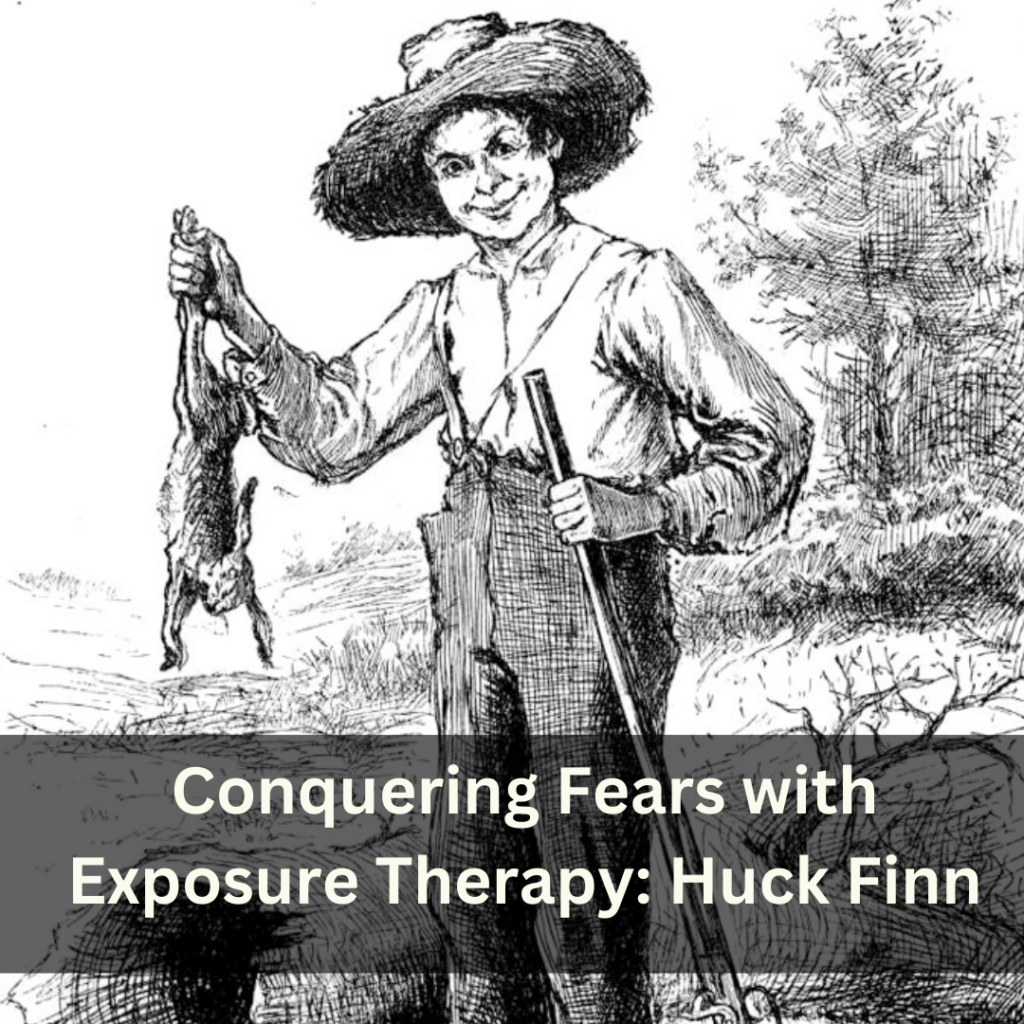
Exposure Therapy Through the Lens of Huck Finn
Introduction to Exposure Therapy: Exposure therapy is a psychological treatment developed to help people confront their fears. The idea is that through repeated exposures to the feared object or context, the person learns to reduce their anxiety and distress, ultimately diminishing the fear's control over their behavior.
Connecting Exposure Therapy to Huck Finn: Huck's numerous adventures, often filled with new and unpredictable environments, can be paralleled with the gradual exposure process in therapy. His repeated exposure to challenging situations mirrors the systematic desensitization used in exposure therapy.
Steps in the Intervention
- Assessment of Fears:
- Begin with identifying specific fears the client has that are similar to those Huck might have faced, such as fear of unknown places, meeting strangers, or handling dangerous situations.
- Development of Fear Hierarchy:
- Create a fear hierarchy related to the client's identified fears, similar to the increasing challenges Huck faces on his journey. Each level should progressively expose the client to more intense aspects of the fear.
- Graduated Exposure:
- Gradually expose the client to the fears listed in the hierarchy, starting with the least scary. This can be done through imaginative exposure (imagining scenes), virtual reality (simulating environments), or real-life exposure if feasible.
- Skills Training:
- Teach coping skills for managing anxiety during exposure, such as deep breathing, mindfulness, or cognitive restructuring. These skills can help the client stay grounded and process the exposure effectively, similar to how Huck uses his wits and resourcefulness.
- In-Vivo Exposure:
- For more intense fears, consider in-vivo exposures that safely replicate the feared stimuli or environment. For example, if a client is afraid of boating, arrange a controlled boating experience, drawing parallels to Huck’s time on the raft.
- Processing Experiences:
- After each exposure session, discuss the experience with the client. This helps them process what they felt and learned, reinforcing the understanding that they can handle the situation and that their fear decreases over time.
- Reinforcement of Positive Outcomes:
- Reinforce any progress and bravery shown during exposure, highlighting the client's capability and resilience, much like Huck's growth throughout his adventures.
Conclusion
Using Huck Finn as a thematic basis for exposure therapy not only makes the process more relatable and engaging but also contextualizes the therapy in a narrative that illustrates courage and personal growth. By navigating fears as Huck navigates the Mississippi, clients can learn to face their own fears with increasing confidence and autonomy, reducing the impact of those fears on their lives.


